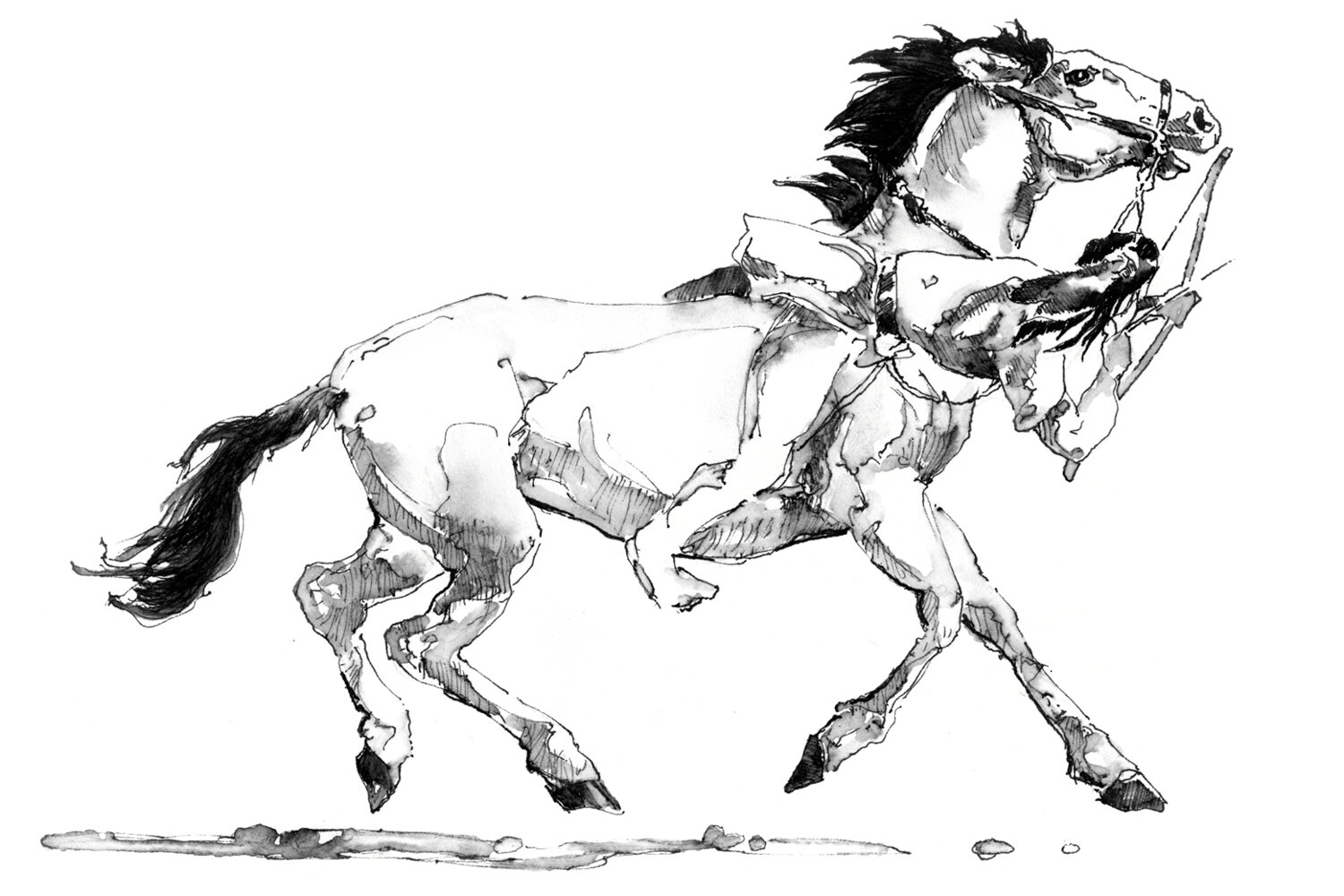Meet the illustrator of “Equus Rising”
As our May 14 publication date for Equus Rising: How the Horse Shaped U.S. History approaches, I’ll be sharing details about the book each week.
Today I’m delighted to introduce you to the illustrator, Robert Spannring. I’ve been a fan of Robert’s art for years, and as soon as the first chapters of this book began to take shape, I started to think about how his pen and wash style could bring the history to life. I couldn’t believe my luck when he signed on to the project. When you see the nineteen illustrations he contributed, which are more unique and imaginative than I ever could have envisioned, you’ll understand why.
Below you can read Robert’s extensive bio. You can also visit his website to view and purchase his work, including some of the original drawings that appear in the book. You can also find Robert here:
Instagram: @spannringfineart
Facebook: Robert Spannring
robert@robertspannring.com
Robert Spannring has been a professional painter and illustrator for fifty years. Born and raised in Livingston, Montana, he grew up sneaking away from school to draw the landscape and its wildlife and explore what might be around the next corner. He began his career as an illustrator and watercolorist.
He was the Artist-In-Residence at the Lake Hotel in Yellowstone National Park, where his work is exhibited throughout the hotel. He also worked with Jack Horner at the Museum of the Rockies, providing the interpretive dinosaur illustrations for the Special Museum Exhibits.
Spannring has done illustration work for the Greater Yellowstone Coalition (of which he is a founding member), Orvis, Winston Rods, Defenders of Wildlife, the U.S. Forest Service, the Montana Department of Fish, Wildlife and Parks, the Boone and Crockett Club, Montana Audubon Council, Roberts Reinhart Publishers, and Sasquatch Books, among others.
Spannring added oil and plein air painting to his artistic repertoire and is now a member of the distinguished Montana Painters Alliance, the Impressionist Society, and the Oil Painters of America. His work has been selected for exhibits and auctions by the Charles M. Russell Museum, the Northwest Museum of Arts and Culture, the Yellowstone Art Museum, the Missoula Art Museum, the Paris Gibson Square Museum of Art, the Hockaday Museum of Art, the WaterWorks Art Museum, and galleries throughout the West. Spannring’s work is also in private collections throughout the U.S.



